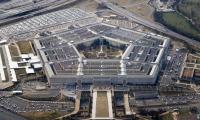The US’s decision to change the name for the region in 2022 from Asia-Pacific to Indo-Pacific – as part of its Indo-Pacific Strategy or IPS – emphasizes the centrality of India in an escalated US strategy to contain, indeed stop, the independent rise of China as a global power that might challenge its global hegemony.
There is no real difference on this subject between Donald Trump on the one hand, and Joe Biden and Kamala Harris on the other – except for the kind of rhetoric they use.
Unsurprisingly, China has refused to go along with this change of name for the region and continues to refer to it as the Asia-Pacific Region. In fact, the Chinese have described the IPS as “a US fantasy targeting China”.
Surprisingly, or maybe unsurprisingly, Pakistan seems to have adopted an equivocal stance towards the US-sponsored change of name for the region. While the Foreign Office continues to call the region Asia-Pacific, as far as I know it has not explicitly rejected the change of name for the region. Any suggestion that Pakistan has implicitly accepted the change of name would hugely suit India, which already has an ocean named after it. More importantly, it would upset China which might ask itself whether or not the opportunistic ruling elite of Pakistan can be relied upon to resist US global and Indian regional hegemony.
The Asia-Pacific region has indeed emerged as possibly the world’s most critical geo-political, geo-strategic and geo-economic theatre. The geo-strategic map of the world for the rest of this century is likely to be decided by developments in this region. It includes East Asia, South Asia, the Western Pacific Ocean and the Indian Ocean. It has more than half the world’s population and accounts for nearly two-thirds of the world economy. It has seven of the world’s largest militaries, including that of Pakistan, which has the sixth largest.
The US IPS confirms the expansion of Nato from a trans-Atlantic security organization into a global hegemonic geo-strategic organization. Apart from containing China, it also aims to establish a ‘rules-based international order’ according to which the US makes and, when it chooses, breaks the rules, while the rest of the international community, including Russia and China, follows them willingly or unwillingly.
In its ‘new cold war’, the US has expanded Nato to the border of Russia; militarily, financially and diplomatically supported the genocide in the Middle East; similarly supported the expansion of war to Lebanon and Iran; is building India as a strategic bulwark against China; has progressively eroded the One China policy and made Taiwan its ‘unsinkable aircraft carrier’ in East Asia; established the QUAD (which includes Australia, Japan, India and the US); AUKUS (which includes Australia, the UK and the US); and other US-led ‘trilaterals’ with Japan and South Korea, and with South Korea and India.
The US has also upgraded its engagement with ASEAN into a Comprehensive Strategic Partnership although, by and large, ASEAN countries wish to maintain a balance between the US and China because China has emerged as a stronger trade and investment partner for them than the US. The US has, nevertheless, upgraded security arrangements with Japan, South Korea, Vietnam, the Philippines and Thailand. It has also launched Partners in the Blue Pacific and a new US-Mekong Partnership. All these arrangements are constituents of the US Indo-Pacific Strategy to win the ‘new cold war’ against China, as it won the last cold war against the Soviet Union.
Unfortunately, for the US, China is a completely different kettle of fish. It represents a far more comprehensive challenge to US global hegemony than the Soviet Union ever could. In particular, through its de-dollarization campaign, China is now challenging US dominance of the international trading, investment and financial system whereby it buys up critical assets of countries around the world merely by printing dollars, and then threatens to confiscate their dollar investments in the US if they pose a challenge to its hegemony.
Pakistan, for the time being, is excluded from the IPS despite being part of the Asia-Pacific region and an Indian Ocean country because of its economic, security, and strategic ties with China; the perception of it as a mismanaged failing state with few options; and India’s objections.
Meanwhile, the US seeks to loosen Pakistan’s strategic ties with China and undermine CPEC which was meant to be the flagship for China’s Belt and Road Initiative. Pakistan’s poor governance and economic performance, and India’s objections also prevent it from becoming part of BRICS, despite its strategic location, its fifth largest population in the world, and its huge economic potential which lies wasted because of the perfidy of its ruling elites.
Should the US succeed in driving a wedge between Pakistan and China, it might then push back on India’s objections to Pakistan’s inclusion in its strategies towards China. India, in that case, might also relent if Pakistan effectively if not formally reneges on its core commitment to the people of Jammu and Kashmir, ceases to build its military capabilities against India, and effectively accepts India’s regional hegemony in South Asia. Many critics might argue that these conditions are already in the process of being fulfilled, despite the rhetoric to the contrary.
The problem, of course, is the people of Pakistan who have come to trust and value their friendship and cooperation with China, almost like no other people. In return, China values the people of Pakistan as a critical asset in countering the stratagems of India and the US.
Needless to say, the people of Pakistan also value a cooperative and non-coercive relationship with the US and are appreciative of the substantial assistance it has provided them over the years in a whole range of fields. However, the US sees Pakistan as a ‘frenemy’, which cannot be trusted on several counts, especially about China. In particular, Pakistan’s refusal to accept India’s hegemony in South Asia is also a problem for the US IPS to contain China.
The people of Pakistan would also welcome the prospect of a breakthrough in relations with India if it is on a principled basis that rejects regional hegemony and seeks to replace conflict and conflict management with dispute settlement and equitable peace. The whole of South Asia would benefit from such a development. Pakistan would, of course, need to insist that such a prospect can never be at the expense of its critical friendship, cooperation and partnership with China.
A stable, secure and prospering Pakistan can significantly contribute, in coordination with other countries of South Asia, towards amelioration of relations between the two giants of Asia, as well as the two global powers of today. This is essential if the global calamities threatening humanity are to be avoided within the very brief and fast-diminishing time available.
Note: This article is based on remarks made at a recent think-tank meeting in Islamabad.
The writer is a former ambassador to the US, India and China and head of UN missions in Iraq and Sudan.
He can be reached at: ashrafjqazi@gmail.com
According to Chanakya, secret of strong nation lies in ability to protect its citizens
Rapid economic progress was made possible under Modi's leadership if not ‘Modi's guarantee’
Pakistan was considered water-abundant country, with per capita water availability being 5650 cubic meters in 1951
Shrine of Mian Mir.—TheNews/FileMy history professor once referred to a theory that says the developmental telos of...
If Pakistan does not take prompt and decisive action, it could find itself at forefront of world's first water conflict
Please note that dam survey team from World Bank had proposed building of this dam in 1955







